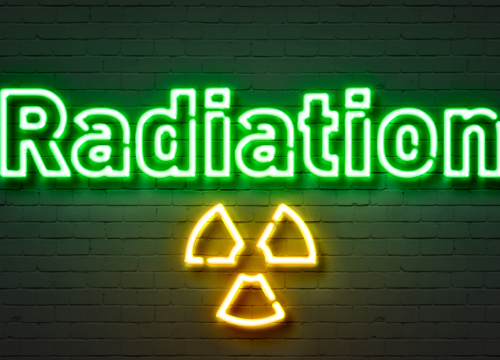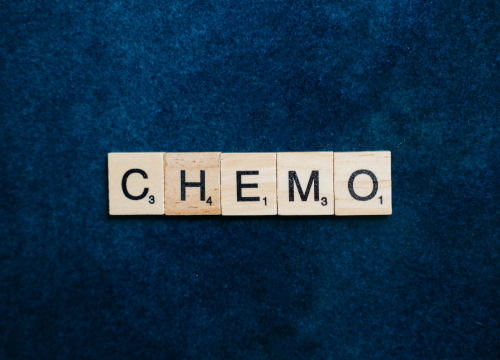Difference Between Radiation and Chemo
Radiation and Chemotherapy are two of the most popular cancer treatments worldwide. As a result, you’ll find several instances where they are mistaken for one another. In reality, both concepts differ distinctly and that’s why it’s important to deal with any misconceptions that may have risen before now.

What is Radiation?
Radiation therapy, also known as radiotherapy, refers to any cancer treatment that involves delivering ionized radiation to different parts of the body. The different types of radiation therapy adopted to treat tumor cells include brachytherapy and external beam radiation stereotactic neurosurgery. To cure cancer, radiotherapy disrupts the growth of the cells and impairs their replication and division, eventually leading to cellular death.
By relying on innovative techniques and tools, radiation can isolate the affected part of the body and limit damage to nearby cells and tissue. Radiotherapy is administered through a painless process that takes seconds to minutes. This treatment has notable side effects, but they are often restricted to the affected area.

What is Chemo?
Chemotherapy, also known as Chemo, are cytotoxic antineoplastic drugs administered intravenously or orally to tackle the growth of cancer cells. Unlike radiation that adopts a localized approach, chemo treatments travel around the body. These drugs disrupt the rapid division of cancer cells by targeting how they replicate and divide.
However, this treatment may also adversely affect other rapidly dividing cells, such as digestive tract cells and hair follicles. This extensive damage to other rapidly dividing cells in the body is one of the notable side effects of chemo treatments.
Possible Similarities Between Radiation and Chemo
When you look at both definitions, there’s no denying that radiation and chemotherapy are aimed at dealing with the growth of cancer cells. Here are a few similarities between both concepts:
- Radiation and chemotherapy treatments aim to remove cancel cells and inhibit future growth.
- Radiation and chemotherapy treatments aim to slow the growth of cancer cells and prevent their spread to other parts of the body.
- Both cancer treatments reduce the size of cancer tumors to reduce pain and other associated symptoms.
What is the Difference Between Radiation and Chemo?
The major difference between radiation and chemotherapy is how they are administered in the body and the location these treatments are delivered to. Chemotherapy is delivered as a form of medication and is ingested into the body orally or intravenously. There are several chemo medications and your doctor will prescribe the most effective depending on your ailment. The effects of chemo treatments are often felt throughout the body.
Radiation, on the other hand, involves directly hitting a cancer tumor with radiation beams. The purpose of this treatment is to change the DNA of these cells and stop their growth. Successful radiation will make cancer cells shrink or die off. Radiotherapy has a calmer effect on the body and side effects are localized.
Radiation vs Chemo: Comparison Table

Summary
When you look at the underlying concept behind radiation and chemotherapy, it’s clear that both are similar. They both serve as a form of cancer cell treatment. However, there’s a clear distinction between both cancer treatments, especially in terms of the nature of the medication and how it’s administered into the body. If you’re interested in unique differences between both concepts, this piece has all the information you need.
FAQs
Which is better radiation or chemo?
There’s no distinct way to determine whether radiation is better than chemo or vice versa. You’ll find that there’s been a considerable amount of positive results gotten from both treatment types, depending on the type of cancer, its stage and the patient’s overall health.
Which is hardest on your body chemo or radiation?
When considering the nature and frequency of side effects related to cancer treatments, it’s clear that chemotherapy treatments are harder on the body. This treatment will cause the breakdown of rapidly dividing cells, such as hair follicles. The side effects of chemo are hair loss, vomiting, and nausea. You may only notice radiotherapy side effects when tackling malignant cancerous growth in the scalp or abdomen.
Is chemo painful or radiation?
Generally speaking, radiation treatments are painless and fast. However, chemotherapy breaks down the entire body anatomy to fight cancer cells and its effect may result in substantial pain and fatigue.
Do you lose your hair with radiation?
No, cancer patients don’t lose their hair due to radiotherapy unless the treatment is focused on their scalp.
What are the 2 most common side effects of radiation?
The two most painful side effects of radiation are swelling and skin conditions caused by the damage of surrounding cells and tissues by radiation beams.
Is radiation painful?
Radiotherapy is often classified as a painless cancer treatment that takes within a few seconds to a few minutes.
What organ is chemo hard on?
Chemotherapy has the harshest effect on human hair and skin. And that’s why most chemo patients suffer heavy hair loss and pale skin.
How much weight do you lose during radiation treatment?
The amount of weight you’ll lose during a radiotherapy is dependent on the severity of the cancer, part of the body affected and any potential side effects.
What they don’t tell you about chemo?
While chemotherapy may be one of the most effective ways to treat cancer, many medical practitioners fail to inform their patients that chemo may fail to completely get rid of the tumor and chemo treatments may also be applied on the skin.
Who pays for chemotherapy in Canada?
The local health insurance plan covers treatments like chemotherapy. So, patients don’t have to pay out of their pockets.
How are cancer drugs funded in Canada?
primary source of funding of cancer care in Canada is the public healthcare system.
What benefits are cancer patients entitled to in Canada?
Cancer patients in Canada get exclusive access to healthcare and medication. However, there’s ongoing research in this jurisdiction to look for more effective ways to cure this ailment.
What happens if you can’t pay for chemo?
If you can’t pay for your chemotherapy treatments, you can rely on public subsidized drug plans to reduce overall cost.
- Difference Between Radiation and Chemo - February 15, 2024
- Difference Between DNA and Genes - February 15, 2024
- Difference Between Aorta and Pulmonary Arteries - December 16, 2009
Search DifferenceBetween.net :
Leave a Response
References :
[0]Image credit: https://www.canva.com/photos/MACNqG_9f9Y-radiation-neon-sign-on-brick-wall-background-/
[1]Image credit: https://www.canva.com/photos/MAEfQkQujTg-chemo-spelled-using-scrabble-tiles/
[2]Rominger, C., Gunderson, L. L., Gelber, R., & Conner, N. (1985). Radiation therapy alone or in combination with chemotherapy in the treatment of residual or inoperable carcinoma of the rectum and rectosigmoid or pelvic recurrence following colorectal surgery Radiation Therapy Oncology Group study (76–16). American Journal of Clinical Oncology, 8(2), 118–127. https://doi.org/10.1097/00000421-198504000-00003
[3]Peters, W. A., Liu, P. Y., Barrett, R. J., Stock, R. J., Monk, B. J., Berek, J. S., Souhami, L., Grigsby, P., Gordon, W., & Alberts, D. S. (2000). Concurrent Chemotherapy and Pelvic Radiation Therapy Compared With Pelvic Radiation Therapy Alone as Adjuvant Therapy After Radical Surgery in High-Risk Early-Stage Cancer of the Cervix. Journal of Clinical Oncology, 18(8), 1606–1613. https://doi.org/10.1200/jco.2000.18.8.1606
[4]Park, I. K., & Kim, J. C. (n.d.). Comparison of the Result of Radiation Alone and Chemoradiation in Cervical Cancer. Journal of the Korean Society for Therapeutic Radiology, 13(2), 191–198. Retrieved February 3, 2024, from https://www.e-roj.org/journal/view.php?number=838
